Ninety years of Bentley; ninety years of cultured travel. Or so we might hope. Yet in these days of NetJets and frequent flyers, the gentleman driver finds himself ever more rarely behind the steering wheel – and ever more often in the air. It takes the average airline passenger around two and a half hours to travel from London to Zurich. Time enough, then, to check the emails on your BlackBerry and skim the headlines in The Economist, while washing down a dry risotto from the aircraft kitchen with a tomato juice. We live in a world where speed is the number one priority – at the risk of losing the pleasures of more civilised travel. Airlines might promise the ‘luxury’ of First Class lounges and exclusive treatment, yet genuine luxury is a different thing entirely: it is not in the speed of the journey, but in taking the time to explore, and experience. While the airline passenger is folding away his tray-table and setting his seat to the upright position, spread out below him are the meandering roads of Europe, with all their hidden enchantments.
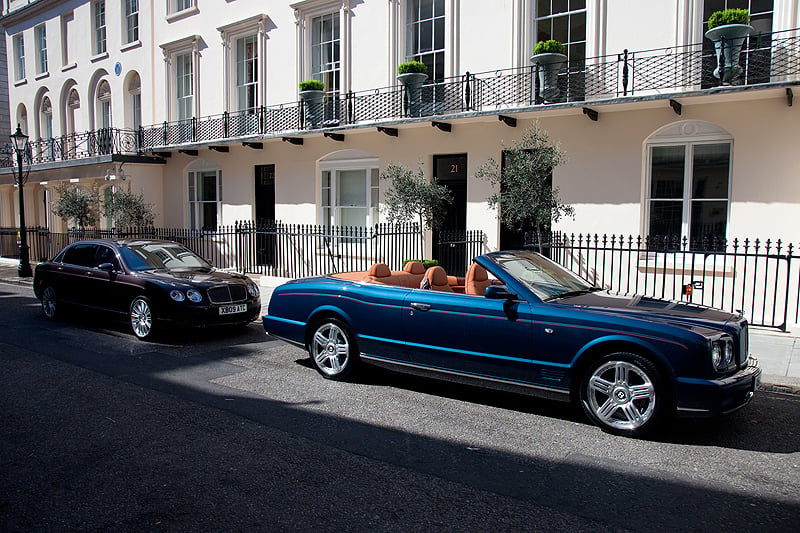
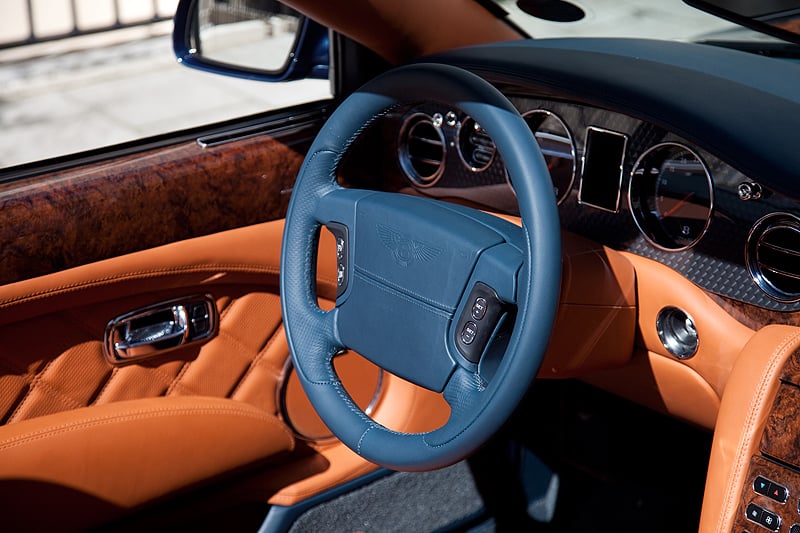
A ‘Grand Tour’ demands, of course, the perfect means of transport: one which combines long-distance comfort with a distinctly sporting edge. And since style, elegance and a distinguished appearance are just as essential, the choice of vehicle becomes rather limited. Those with the wherewithal might turn, first and foremost, to Bentley Motors – and not just because the cars bearing the famous ‘winged B’ are so perfectly suited to long-distance cruising. It’s the whole 90-year history of the Bentley marque that excites the senses, from W.O. Bentley’s revolutionary 3-litre engine of 1919, through the five Le Mans wins between 1924 and 1930, to the triumph seven decades later, when – in 2003 – Bentley again swept first past the chequered flag in the world’s greatest endurance event.
Those who value history and tradition will revel not only in the heritage of such racing cars as the magnificent, supercharged Blower Bentley (famously disapproved of by W.O.), but also in the men behind the machines: the celebrated ‘Bentley Boys’. The exploits of this group of wealthy playboys – led by Woolf ‘Babe’ Barnato – read like a story from a boys’ comic-book. The Bentley Boys lived life not just to the full, but to overflowing and affluent customers, those who appreciated the good things in life, wanted a taste of this thrilling lifestyle for themselves. To satisfy increasing demand, Bentley built elegant and unusually comfortable automobiles for the road.
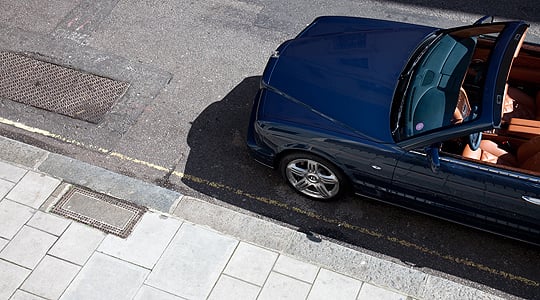
Soon after the War, the Bentley engineers set new standards for luxurious saloons with the world-beating, sensationally styled R-Type Continental, going on to develop the Bentley S2, with its large, powerful, light-alloy V8 engine introduced in 1959. The S2 was celebrated for its high-speed luxury – an ethos which Bentley pursues to this day. The current Bentley Arnage, Azure and Brooklands series are likewise propelled by 6.75 litres of V8 muscle; as is the new Bentley Mulsanne, which succeeds to the Arnage throne from 2010. After Bentley was acquired by the Volkswagen Group in 1998, a new, modern propulsion variant was added with the large W12 engine, which enjoyed great success in the Continental series. Today the 12-cylinder goes from strength to strength, with its combination of high-tech production, supreme build quality, and a certain British heritage which helps mark its place in the global fight for market share.
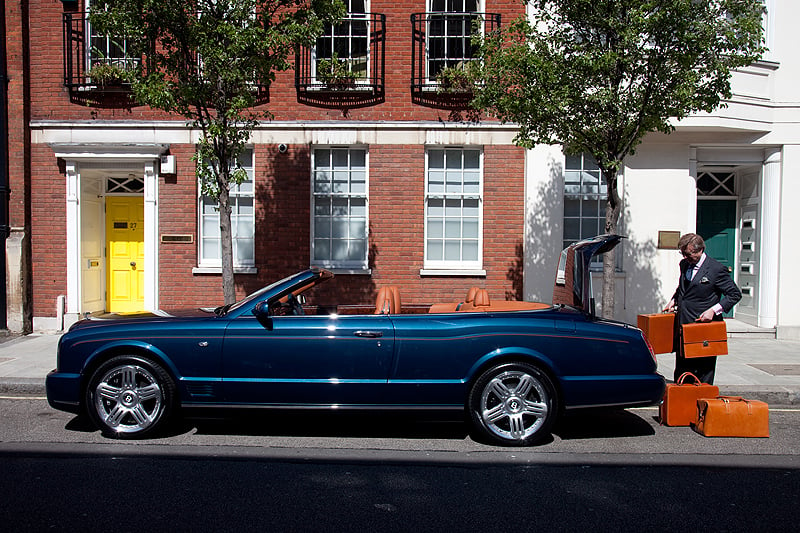
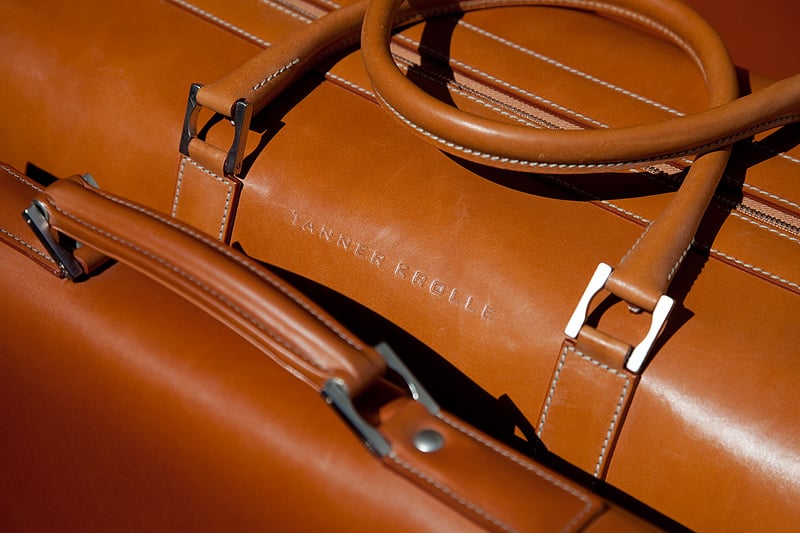
In the Jack Barclay showroom in London’s Berkeley Square, historical tradition and cutting-edge technology meet head on. Since 1927, high society has headed to Mayfair to buy its Bentleys and Rolls-Royces; and today, Jack Barclay ranks among the world’s most successful dealers in British luxury cars. An appropriate place, therefore, from which to start our Grand Tour to Zurich. In the heavy traffic of central London, among black cabs and countless small city cars, floats the Windsor Blue Bentley Azure T, like a creature from another planet: nearly five and a half metres long with a weight of almost three tonnes, the cabriolet has the dimensions of a Mercedes Sprinter. The traditional 8-cylinder engine is tuned to its sportiest ‘T’ designation, its 500bhp endowing the open-topped tourer with the performance of a racing car, even while one enjoys the exquisite scent of the diamond-quilted leather seats – a glorious mix of Le Mans 24 Hours and Buckingham Palace tea party. Then the three-layer canvas roof slides back in near-silence, stowing itself neatly away in just 25 seconds, and revealing the precious sunshine. We reach for our sunglasses, full of reverence for the vast Bentley Azure T – a masterpiece of luxury that’s still in touch with its sporting heritage.
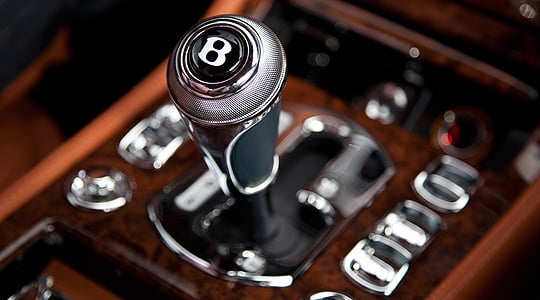
Meanwhile, the Bentley Continental Flying Spur follows a different philosophy. The sweeping lines of Dirk van Braeckel’s designs are contemporary enough to hold their own in the fashionable boulevards of the world: whether it’s Paris’s boutique-strewn Rue Saint-Honoré, the restrained elegance of London’s Savile Row, or the wide stretches of Rodeo Drive in Beverly Hills. However, this is more than a mere luxury four-door saloon for shopping trips. The taut handling of the ‘Speed’ version, in particular, promises precise control at even the highest speeds – and, indeed, the glorious 600bhp W12 engine can propel the car to 200mph.
Gliding serenely through the crowded streets of shoppers, the Continental Flying Spur Speed leaves the city to head for the English Channel via the M20 motorway, and soon exhibits its ‘other side’ – when called upon, it is aggressive and incomprehensibly fast yet always agile. If one could drive the full 1000km to Zurich as if on a salt lake in Utah, without interruptions for refuelling and at full speed, the journey would be dispatched in just three hours and 15 minutes. Of course, it’s ill-mannered these days to linger too long on thoughts of a car’s outright performance; yet the Flying Spur’s brutish muscle is matched by other, more gentlemanly qualities. The passengers would be hard-pressed to find a more spacious, more comfortable means of crossing continents.
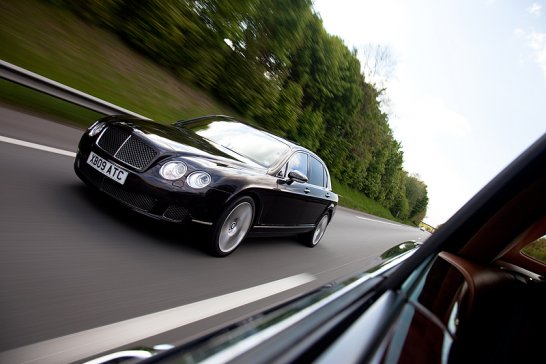
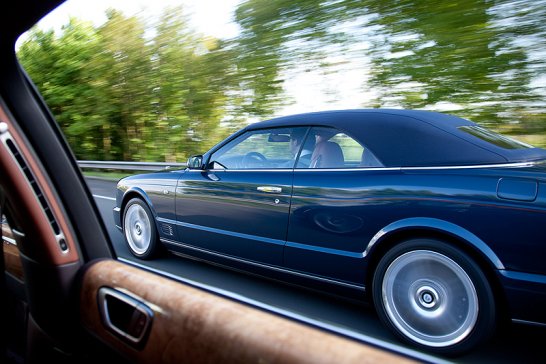
The sporting heritage of our two Bentleys stands in stark contrast to the pleasures of that other marque: the choice of chauffeurs, the Rolls-Royce. While the Rolls is the preferred vehicle for those who wish to ride in the back, Bentleys have always been created primarily for the owner’s driving pleasure. Secure in the front seat of the Azure T, the driver’s right foot – clad in supple, handsewn calfskin – presses the throttle firmly to the floor… or that’s the theory. In the real world, one needs not only the right shoes but also an open, empty road to experience perfect driving pleasure.
While the impressive stopping power of the ceramic brakes is ably demonstrated by the highways of South-East England, we yearn for the almost-deserted stretches of fast road on the far side of the Channel. Still, if you are forced to tackle the constant stop-start of busy British roads, you may as well do so in style and comfort. And, thanks to their abundant torque, nothing beats our two machines from Crewe. The eight cylinders of the twin-turbocharged Azure T provides an effortless 1000Nm, 90 per cent of it available from as little as 1800rpm, hence one surfs an endless, graceful wave over hills and valleys. After 5.5 seconds, the speedometer’s red needle touches 62mph and yet the car’s top speed lies far, far ahead – at a prodigious 179mph. To unleash the car’s full potential requires the driver’s full attention; and, in the case of our lady driver, a suitable scarf to avoid the perils of windblown hair.
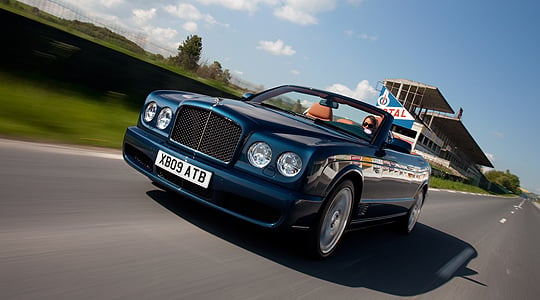
The Champagne-Ardennes region of France flashes past in a coloured streak, as our Flying Spur Speed revels in the joy of its 600bhp and 750Nm of torque. But there’s more to a Bentley than its smooth running and quiet strength. We sit cosseted in soft upholstery, handcrafted from the immaculate leather of more than 11 hides, matched by luxurious carpets fitted by skilled craftsman in the Crewe factory – where manual workmanship is still acknowledged as superior to fully automated production. There are slight differences between each Bentley series. The Azure T boasts black instrument panels set in an aluminium fascia, for example, while Burr Walnut is the standard veneer for the Continental Flying Spur. Meanwhile, the cabriolet’s handmade eight-cylinder engine bears a plaque with the signature of the engine builder, and the lacquer finish and interior equipment of each individual car are likewise the personal responsibility of a skilled craftsman. Should a customer wish for a greater degree of personalisation, Bentley Mulliner is able to supply that bespoke touch.
Usually, Mulliner is asked for a few small elements to personalise a Bentley with a customer’s own signature style but it can be something far more elaborate. Anything, in fact, from a built-in mobile office to full armour-plating to protect against rocket bombardment. There are no limits to the options offered by Bentley’s in-house ‘special unit’, which reminds us – perhaps intentionally – of Q’s laboratory in the James Bond films. In Ian Fleming’s original novels, 007 was very much a Bentley man, so it’s natural to picture him slipping into an Arnage T and, protected by armour-plating from the daily rigours of his world, sitting back and relaxing to the sound of a ‘Naim for Bentley’ hi-fi system with its 10 speakers, dual-channel sub-woofer and 1100 Watt amplifier…
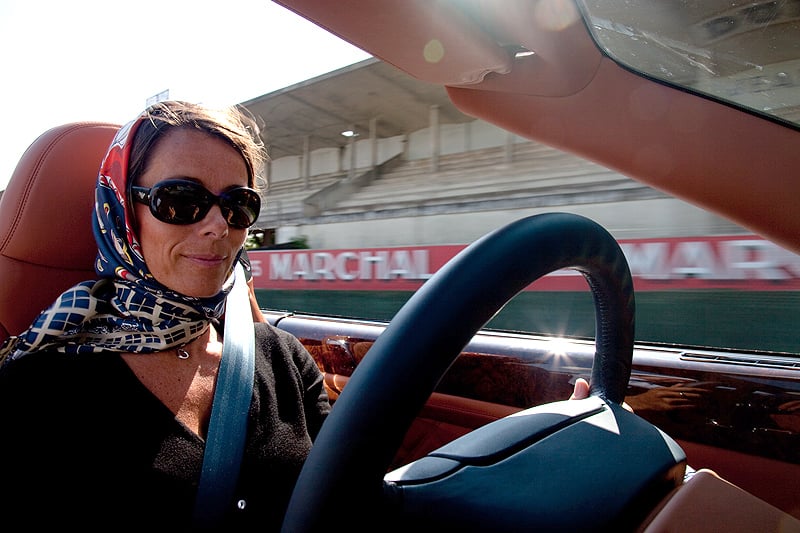
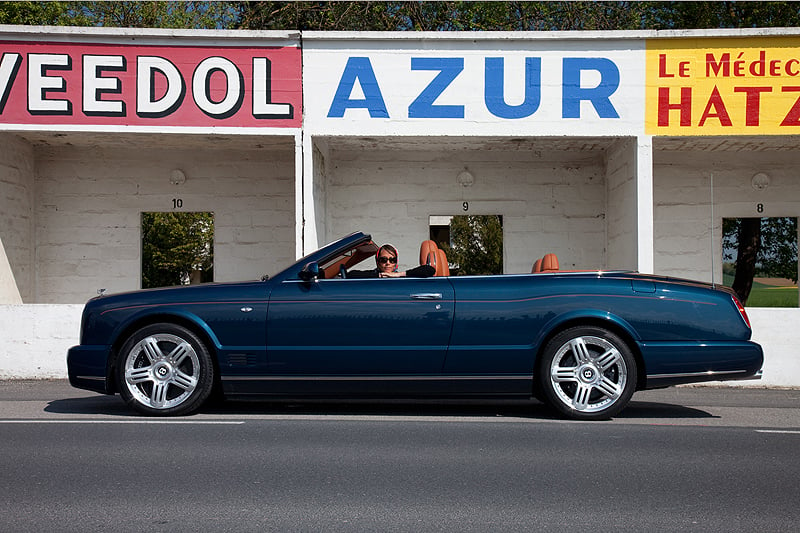
But thoughts of our journey pull us back to reality. And to the small silver button on the highly polished wood console, which allows the driver to experience – within seconds – the wind and weather of the outside world, as that canvas roof draws smoothly back. We put on hold our amazement at the ruins of the Circuit de Reims-Gueux – from 1926 to 1966 one of the foremost race circuits of France, but today a crumbling testament to a bygone age – and, noting the sun’s position over the yardarm, we plan an overnight stop on our Grand Tour, in the heart of the Champagne region.
Tomorrow is another day but, for now, we raise a glass to the setting sun and watch the air tremble and flicker above the hot bonnets of our Bentleys. High in the evening sky, lazy vapour trails mark the progress of the business fliers. Is the true art of travel really dead? We hope to prove otherwise.
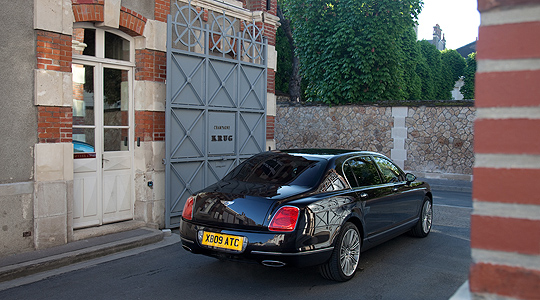
After a restful night in a French country hotel (perhaps in a room once occupied by Woolf Barnato and his mistress of the moment, on the way back from Le Mans or the Côte d’Azur?), we are refreshed and eager to set forth. Our spirits rise as we slide into the now-familiar leather seats, running our fingers over the chrome plating of the gearknob and hearing the engines thunder in the fresh morning air. The days of the Blower Bentleys might be long gone but it’s fascinating, nonetheless, to realise how much history filters through to the new models, reminding us of the past. Despite the acquisition by the Volkswagen Group, the Bentley legend remains true. The links to the past are strong; perhaps more so than with any other marque. In every detail of the cars – whether it’s the vigorous rumble of the Azure’s engine or the distinguished silhouette of the Flying Spur – 90 years of pride and tradition echoes down through the decades.
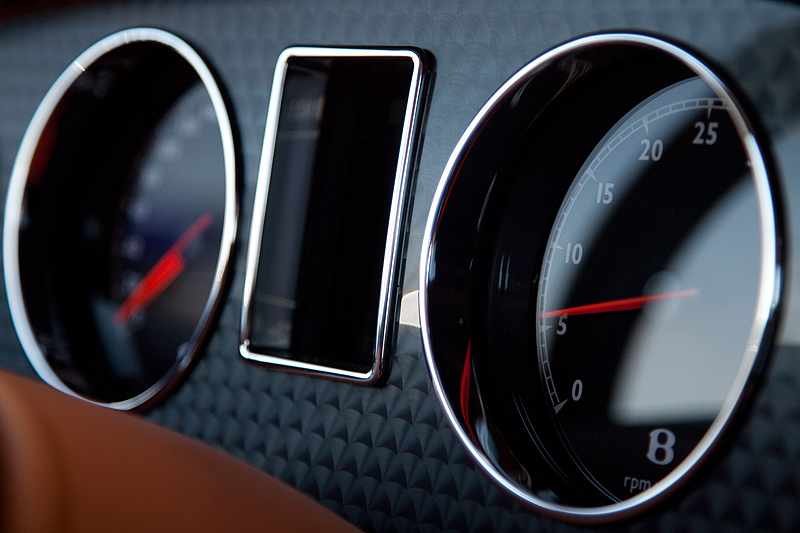
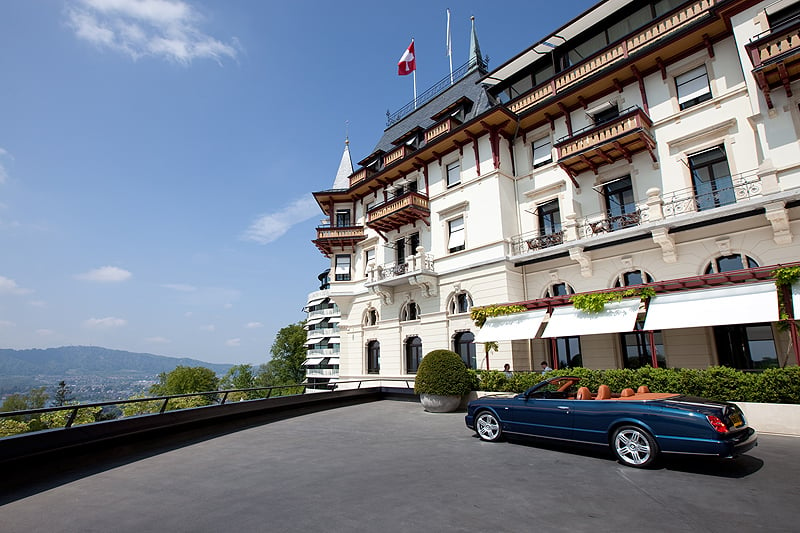
And the driver, too, carries a weight of responsibility, if only to relight – on occasion – the fiery spirit of the Grand Tourer. And now, as we head for Switzerland, we will drive on some of our Tour’s most beautiful roads. First we cut through the green vistas of Lorraine, in seemingly endless straight lines, then past the Vosges mountains and Alsace. On a short stretch of unrestricted autobahn we let rip, allowing our cars to stretch their legs before swinging up through the zigzag roads of the Black Forest. Here, the road enclosed by dark fir trees, the sound of the two engines is thrown back at us from a natural echo chamber, as we repeatedly accelerate and brake for the sharp, uphill bends. This terrain is the perfect testing ground for the cars’ sporting, versatile natures.
Later, on the edge of Lake Zurich, our journey comes finally to its end. There’s time to reflect and share our thoughts, nursing an apéritif on the terrace of the Dolder Grand or simply absorbing the view over the Alps, which glow in the evening light. There are countless winding roads through the mountains and small villages, waiting only to be discovered. But perhaps we’ll leave them for our next Grand Tour.
Photos: Jan Baedeker
















